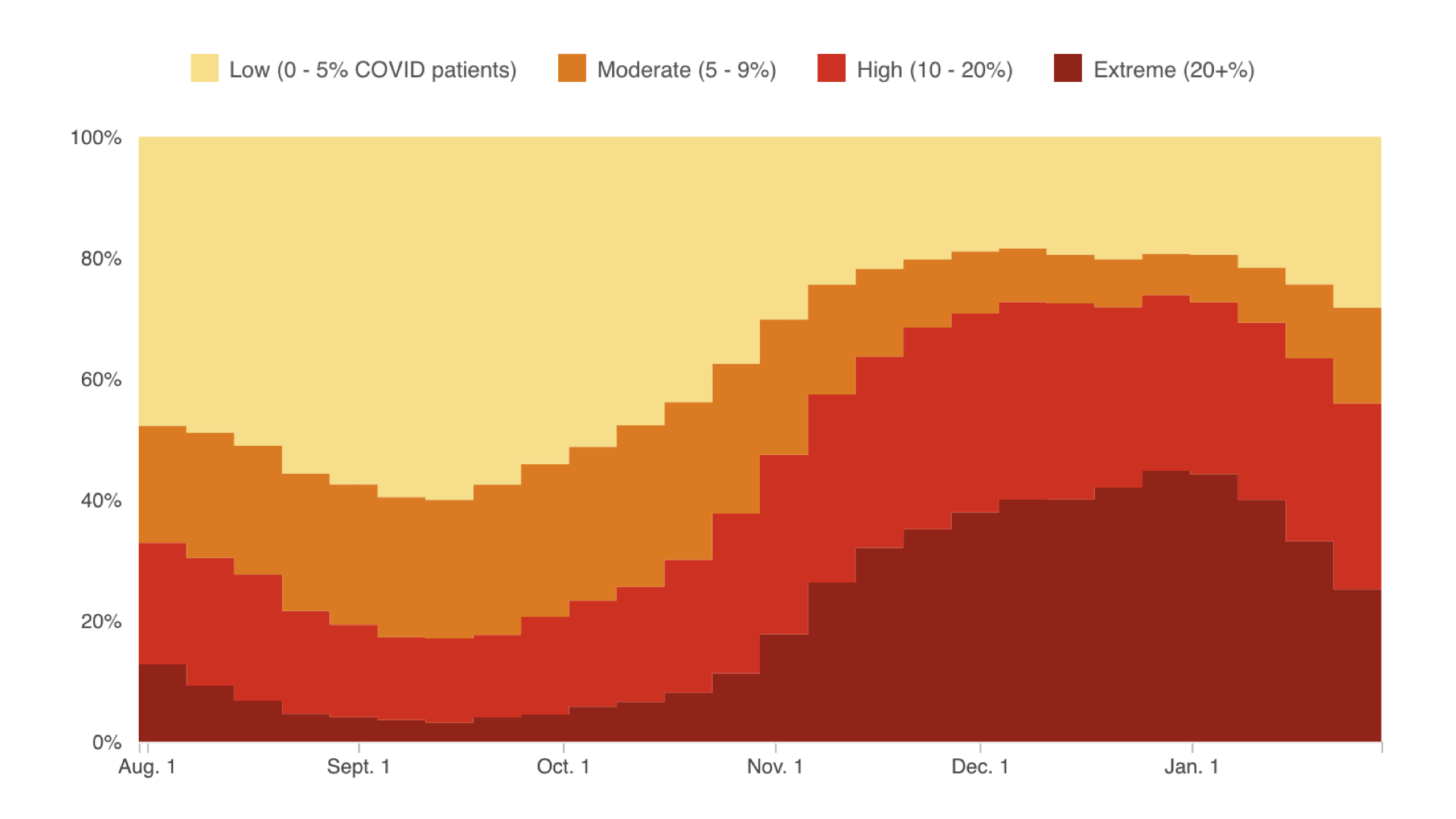
Many hospitals are still overwhelmed by COVID-19 patients. Is yours?
The ratio of COVID-19 hospitalizations to total beds gives a picture of how much strain a hospital is under.
By Sean McMinn and Audrey Carlsen/NPR

NPR
Note: This story will be updated periodically, as new data are released.
Loading…
(Washington) — The federal government regularly releases detailed hospital-level data which reveal the toll the pandemic is taking on health care facilities. These data show how many inpatient and ICU beds are in use on a weekly basis — and what portion of them are occupied by COVID-19 patients.
Nationally, COVID-19 hospitalizations have been declining since mid-January, but they’re still very high in many places.
Using an analysis from the University of Minnesota’s COVID-19 Hospitalization Tracking Project, NPR has created a tool that allows you to see how your local hospital and your county overall are faring.
Look up the hospitals where you live to find out how many beds are filled with COVID-19 patients, and the average for hospitals in your county.
Loading…
The ratio of COVID-19 hospitalizations to total beds gives a picture of how much strain a hospital is under. It’s concerning when it rises above 10%, hospital capacity experts told NPR.
Anything above 20% represents “extreme stress” for the hospital, according to a framework developed by the Institute for Health Metrics and Evaluation at the University of Washington.
ICU capacity is another important indicator of hospital strain. Those thresholds are higher: When 30% or more of ICU beds are filled by COVID-19 patients, it suggests a hospital is operating under “high stress.” When 60% or more are full, it’s considered at “extreme stress,” according to IHME.
This federal hospitalization data, which is available going back to August 2020, also provides a historical perspective on the stress level over time in each state. See how your state is faring now:
Loading…
All of these indicators vary depending on the size of a given hospital and its resources. The number of hospitals reporting their data also varies each week, though more have started reporting since the federal government started collecting this data.


